Growing up, I was fascinated by the hundreds of interesting plants that grew in the forests behind my childhood home in rural Connecticut. We would wander down old forgotten trails for hours, lost in the greenery and enchanted by the timelessness of the place.
I would later come to realize that these old woods are home to one of the most extensive systems of indigenous medicine in the world.
We now know that the original inhabitants of North America were extremely advanced, far beyond what our textbooks and cowboy movies would have us believe. One need only examine the hundreds of gigantic temple mounds that still stand, from the southern Mississippi Valley all the way up into the Great Lakes region, to understand the hidden capability of these cultures. According to respected archaeologists, the first of these mind-boggling earthworks were constructed 1,000 years before the Great Pyramids of Egypt!
Perhaps the clearest window into the highly evolved technologies that First Nations communities possess is their back-of-the-hand familiarity with the medicines of the forest. In fact, the early explorers of the new world relied heavily upon indigenous herbals and would not have survived without them.
Known for unprecedented generosity to strangers, tribal elders often shared this knowledge with European trappers and frontiersmen with little to no expectation of compensation. Plant wisdom was not seen as a possession to be hoarded or leveraged for personal gain. One’s intimate understanding of both plant and human came with a built-in responsibility to use these tools for the benefit of all – even the odd pale-skinned newcomers from the east.
A far cry from our patent-crazed pharmaceutical system of today right?
I tread very lightly on this sacred topic out of deep respect for the richness of the First Nations that live, or have lived, on this continent. Each group has their own distinct medicine tradition and too often they are lumped together under one homogenized label. We never share indigenous herbal knowledge without the express permission of the healer and their community to do so.
Also important: Because of over-harvesting and deforestation, many North American herbs including American Ginseng (below), are now endangered in certain regions. When seeking out these powerful plants, please make sure to source them from a conscious and sustainable outfit. For more information on how to safely harvest and protect the precious herbs of the world, visit the hard working community at United Plant Savers (www.unitedplantsavers.org)
Without further ado – the three indigenous herbs below were shared with foreign settlers centuries ago and are still widely used because of their effectiveness. They are shining examples of the extraordinary contribution that the early civilizations of North America made to herbal and clinical medicine.
“All plants are our brothers and sisters.
They talk to us and if we listen, we can hear them.”
— Arapaho Proverb
American Ginseng: Panax quinquefolius
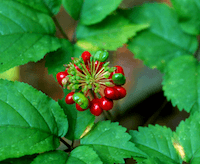 When many of us think of ginseng our minds immediately leap across the Pacific Ocean to Asia, but an equally potent version of this plant has been used here in North America for thousands of years. The Seneca celebrate American Ginseng as one of the five most valuable plant medicines, and are not alone in their sentiments.
When many of us think of ginseng our minds immediately leap across the Pacific Ocean to Asia, but an equally potent version of this plant has been used here in North America for thousands of years. The Seneca celebrate American Ginseng as one of the five most valuable plant medicines, and are not alone in their sentiments.
Like so many other herbs, French traders in Quebec quickly recognized American ginseng for its medicinal value and began purchasing large quantities back in the 1600 and 1700s.
What it’s good for:
Unlike the Asian variety which warms and stimulates the body (promoting the “yang” – or masculine forces within us), American ginseng does quite the opposite. Known for its cooling properties, American ginseng is often used to stabilize fever, reduce swelling, and flush out the digestive tract.
The Cherokee, Mohegan, and Potawatomi often dried the herb and brewed it into therapeutic teas. Known as a robust adaptogen, it has been shown to reduce many types of stress – both physical and mental.
“Panax”, the first word in its latin name, comes from the Greek word for panacea, meaning “all healing”. High praise is built right into the title!
Goldenseal: Hydrastis Canadensis
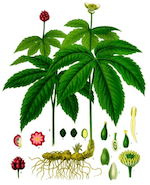 Called the “universal herb” for over 300 years, the goldenseal is a perennial that thrives in the forests of Ohio, Indiana, Kentucky, and West Virginia – particularly in the Appalachian region. It was most likely introduced to early colonists by the Iroquois and its use as a medicinal has spread like wildfire since then.
Called the “universal herb” for over 300 years, the goldenseal is a perennial that thrives in the forests of Ohio, Indiana, Kentucky, and West Virginia – particularly in the Appalachian region. It was most likely introduced to early colonists by the Iroquois and its use as a medicinal has spread like wildfire since then.
What it’s good for:
True to its reputation as the “universal herb”, goldenseal was used in a wide variety of applications. It was highly favored as a diuretic, liver cleanser, and was commonly infused in cold water to treat sore or itchy eyes. The Catawbas boiled the root and drank its tea to alleviate jaundice, stomach ulcers, and cold sores.
If you’re feeling adventurous – the Cherokee were known to grind the root into a powder and mix it with bear grease to create an insect repellant. The bear grease can be substituted with other vegetable based oils!
Black Cohosh: Actaea racemosa
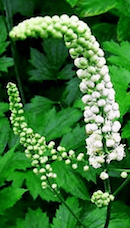 Also known as “black snakeroot”, the black cohosh is a tall, white flowered plant that is quite common in the woodlands of the Lake Ontario region all the way down to Georgia. The word “cohosh” comes from the Algonquin term for “rough”, which is a reference to the plant’s gnarled root structure. This subterranean portion of the plant, or rhizome, is where the medicine is in this herb.
Also known as “black snakeroot”, the black cohosh is a tall, white flowered plant that is quite common in the woodlands of the Lake Ontario region all the way down to Georgia. The word “cohosh” comes from the Algonquin term for “rough”, which is a reference to the plant’s gnarled root structure. This subterranean portion of the plant, or rhizome, is where the medicine is in this herb.
What it’s good for: The black cohosh has been a go-to remedy in women’s health for centuries. It is used by First Nations healers to treat menstrual cramps, sooth hot flashes, and alleviate post-menopausal depression.
Lately, black cohosh has become a popular herbal supplement in health food stores and many claim it has even broader applications, although these have not been scientifically proven yet.
Interesting fact: Both goldenseal and the black cohosh are in the buttercup family!
I hope you find the herbs above to be of benefit to yourself and your loved ones. Again, we carry a deep respect for the native cultures who brought us this vital knowledge and are honored to be in a position to pass it along to you.
Stay curious,
Nick Polizzi
Founder of The Sacred Science
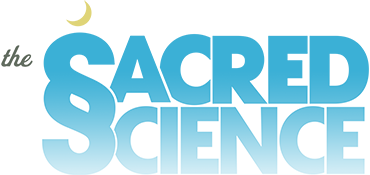
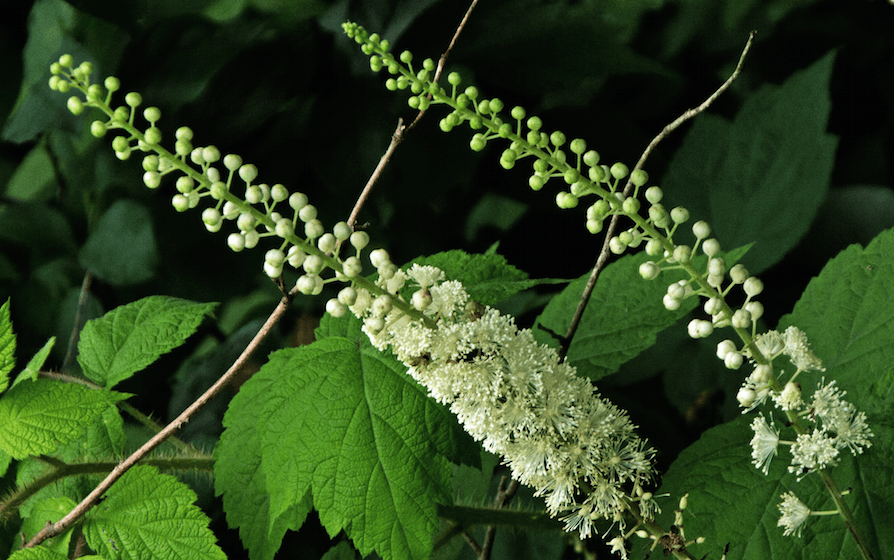

84 Responses
Thank you for sharing valuable information with us!
Thank you thank you, Rick and Sacred Science!! I read as much as I could…which was all of it💙🙌‼️. I look forward to the newsletter 🥰. Respectfully, Linda…retired massage therapist, 81, herb person. Still helping myself and others get well be well. Also, lifelong study of oriental medicine, integrating acupuncture, etc. into my healing when needed☺️. Again thank you
Something that comes to mind when I read your post, is that we also need to show consideration to the local varieties that can be used for the same remedy; ie one Native practitioner can offer a suggestion for a certain plant, and another Native practitioner in a different location another with similar effect and they are both right and should be respected.
Nick, goldenseal is a endangered plant now, and American Ginseng has to be protected b/c it is also being over harvested.
thank you!
Great post & just the right amount of information for me! Thank you.
If any readers know of a good east coast west coast books on herbal identification and use please email me with your suggestions. If you have a place with a great price on your suggested book (s) please include that also. Thank you .
If you can find one, the Field and Garden Guide to Herbs by MM Kondor and CB Wilson walks you through the East Coast natives and some common uses. Published by Stackpole Books in 1983.
Don’t overlook the common herbs in your yard that have been used by indigenous people for centuries. Plantain, burdock, cleavers, dandelion, etc. We have a veritable medicine chest around us right outside our doirs. I use them often, last year during a severe illness I used these common herbs to support and help heal my body. They are free, and priceless
good information, thank you, Clea
I’ve used goldenseal as an antibiotic, even on my cats. At one point, one of my cats had a bad scratch that didn’t seem to be closing – we had just been using a wound wash saline solution.
Then we put goldenseal on it with a q-tip. He tolerated it very well – didn’t try to lick it off. By the next morning, the wound had closed with a scab. We kept using the goldenseal and the scab came off completely with a full sealed heal within another 36 hours.
Nick – we are working on our July/August Indigenous Cultures issue and would love to include an article from you, or your ok to use part of your blog. Unfortunately I just came across your site and our deadline is just 10 days away. Is there a possibility we can make this happen.
(800) 758-3223 Darby Davis
Very informative,many thanks
Hi Nick, Homoeopathy uses these three herbs for the reasons mentioned and other reasons. I recommend that your readers read the materia medica on these plants .
Homoeopathy only needs to harvest one of the plants in order to have an almost never ending supply of medicine from the plants. It really is the most ethical and effective means to use the scarce resources of the world
Hi…medicinal uses of native plants is of great interest to me, although I am a horticulturist/amateur botanist. Thanks for an interesting article.
I live in Upstate NY and recently visited the Farmer’s Museum in Cooperstown (instead of the OTHER museum in Cooperstown; the village also has an art museum, FYI!). Its grounds are a recreation of a colonial village. I went straight to the Apothecary.
Interesting: the docent was making ginger pills and talking them up, and handing out free samples to the tourists. After we were alone, I remarked that ginger is not a native plant and he shared something that surprised me. Early colonists valued healing plants, but only the ones they imported. They were not interested in the local flora; he speculated that they were afraid or hesitant about all these unknown plants. Why didn’t they just ask the (remaining) natives? I wondered. He didn’t know. He even showed me an early herbal (a worn old book) and sure enough, it lacked native American plants. Ridiculous! I cried. Fear? Racism? How stupid/short-sighted. He hastened to show me a later book, mid-1800s, written by a Scottish botanist who was not fearful, racist, or stupid/short-sighted and worked to gather that information.
Have you heard/encountered any similar stories?
My email address is above or google my name and pop into my website.
Many thanks…
That’s interesting. I’m glad the early Americans finally leaned on Indigenous know-how. I suppose coming mostly from Europe the Indians did seem “primitive” and strange to them. I guess we can all learn to embrace those things in our own lives that we may turn away from for the same reasons.
Love it!
Thank you very goof informaticion.
I really appreciate your sending out such interesting information. Thank you. I do stay curious and thank my Maker that one can learn so much with an iPad, even in my eighties. And it is also refreshing not to be offered something at a bargain price at the end..
And I am 82. Let’s keep trucking!
Interesting, thank you 🙂
Thank you for freely sharing this information… I loved the article. I have been using herbs for decades and they are my “go to” for everything and they keep me healthy all year round!
Great read! Thank you Nick, it would be great to see home gardens flourishing with these herbs. Better yet it would be great to see farms working together, cultivating and promoting foods that heal.
Thanks Nick for your sharings. Where can we get those plants in the cities here like Montreal, etc.
Very interesting info. I’ll keep my eyes open when hiking in our CT woods.
And Happy Birthday Nick. I hope you have a very special day.
Hi Nick,
I just want to say thank you for how you present thing’s to us. Your deep respect for all Native people that you encounter is so refreshing. And that fact that you add, “not to be capitalized upon” is such a plus! Thanks for all you do.
With the fullness of my spirit in Gratitude for your efforts and work in radiating the Truth about the power of God’s Gifted and sacred Plant medicine, I urge you to be more informative in your sharing about the Herbs and Roots you speak of, especially Black Cohosh. In my years of traditional homebirth midwifery, where I studied with elder midwives, I know first hand how Black Cohosh is not just for treating menstrual cramps, but can act as a very powerful abortive. It is NOT to be used lightly, and must be studied, with its spirit understood and information known, before administering it in any fashion. God BLESS your every cell, and the whole of your work, Sacred Science! ***Elise R. Brion***
Thank you Nick for the time and research that you write about. Such valuable information, but mostly leaning the knowledge of our Indian ancestors. I Post your material on my FB Wall.
Thank you again,
Susan
Nick, wild ginseng is not only endangered, but is also protected and people can be arrested for harvesting it without a license. Please let folks know that.
There are varieties which can be safely planted around people’s homes for their own use that do very well, at least here in the south.
I enjoyed this article and agree that traditional medicines always include energetic relationships – why science is often baffled by them! My own experience and observation of goldenseal is that it is the herbal equivalent of an antibiotic. Just as we wouldn’t use penicillin every day, or for every tiny thing that comes up, so we should be thoughtful and respectful in our use of goldenseal. Its endangerment due to overharvest may be a signifier of this. We don’t need to bring out the big guns for everything.
Thank you for the reminder. We get a lot of itchy eyes around here.
Thank you Nick. My wife and I live in the Big Horn Mtns. of Wyo and educating ourselves about the plant life in this ego zone. If you would have any material or ideas where we might find info concerning the native americans and plants in this region we would thank you for pointing us to it. Love your sight and your articles.
Thank you, this is a wonderful article, I appreciate hearing the history and information regarding the healing benefits of the herbs.
Namaste
So kind of you the share your vast knowledge with us all ☺️
Thank you for this information!! Love
I’m familiar with these herbs from the book “Back To Eden” by Jethro Kloss. It is a good handbook for home made remedies and quick treatments for many ailments, with recipes and applications.
…I was going to pay tribute to Jethro Kloss also…:)
Hi You have a great knowledge of the plans and herbs could you tell me what is best to use for Lymes disease and the bacterial diseases that go with it that collect in the body that cause aches and pains than you Vicky
Thank you for sharing knowledge
Great Blessings upon you
L
Thank you Nick for this powerful information.
Thank you Nick for sharing this amazing article!
Thank you for the information! Where in Conn are you from? I grew up there also.
Thank you, Nick for sharing this, I thoroughly enjoy reading the posts from the sacred science team & appreciate your knowledge & reverence for native cultures and practices.
Try Chanca Piedra for kidney flush. Also breaks up Liver and Gallbladder stones and acts as a detox.
I AM INTERESTED ( Janet Redford got me started) I will follow up Our Native Americans could teach us a lot. Clint
Where in CT are you from? I grew up in Manchester.
I have used Goldenseal for many many years and the most notable thing that I was able to heal was gangrene developing in my index finger from a severe blow to it while I was moving. It healed the gamgrene very rapidly. Thank you for all the great information
All the most beautiful of blessings for you Nick, for your wonderful sharings.
Thanks for shraing!
All three mentioned plants are endangered and whenever possible by cultivated varieties or find analogs to use in place of endangered herbs.
Thank’s for the info and ready to go to Peru
Thank you for sharing and carrying for 1st Nations.
Absolutely. Treating plant medicine with such respect is the best course of action.
The teachings and the healing power from various plant medicinals can prolong your life and the quality of it as well.
Thanks nick!
Great post…yet again!
This is awesome…Thank You! 🙂
I look forward to your posts! Please tell me where you sourced those fabulous plant diagrams with Latin names? Love & Light, Caroline
hmmmmm,,, interestting
thanks ,love herbal medicine.someones looking after us !
Thankyou Nick, your writing of issues are awesome and hopefully will help us connect with more truth about really healing. Thankyou
Thank you for everything in the e-mails you have sent to me! I haven’t read all of them, but I just started really gaining so much knowledge from them!!!! Thanks again!
Thank you Nick.
I know that South Africa also has many indigenous plants that serve medicinal purposes because I used to talk to the old medicine men and women when I was young in their own language but they never told me more than a casual remark because it was their form of control.
It is interesting and they probably have no side-effects too!
Take care.
Godfrey Kerr
Very interesting would like to
know more. Do you give courses
on identifeing and preparing herbs?
I simply LOVE your wisdom! Thank you for your posts. They always come in a most “timely” manner, and awaken bits of my soul’s ancient wisdom as well as confirm that the wanderer’s path is right below my feet and above my head, it is everywhere as it connects to everyone.
Thank you!
Touched by the Universe.
Tash.
Thank you Nick for this wonderful report about our native plants. I want to share a treatment I use that is amazingly effective. I occasionally get a cold sore on my lip. (always, by the way, after eating too many sugary sweets around the holidays). I got a prescription for acyclovir ointment which was not very effective as I wished it could be and I would shun people from embarrassment and have to wait until it healed. Well one day when I was smelling my eucalyptus oil I thought I wonder if this would help that cold sore? I put a couple of drops on the outside 4 times a day (not to be ingested!) and it stopped the coldsore dead in its tracks!!! I have repeated this experiment many times and it still works.
And cut way back on holiday sweets.
Nick, although I applaud your efforts to raise people’s awareness of indigenous plant wisdom, please note that all three of the plant species you have mentioned here, American Ginseng, Goldenseal, and Black Cohosh, are now considered endangered species due to over harvesting by the “natural medicines industry.” People need to become aware of the imminent extinction of valuable medicinal plants in North America due to loss of habitat, use of herbicides, greed-driven-for-profit harvesting without regard to sustaining plant populations, and global warming.
Many thanks for your pearls of wisdom Nick
The native American Indians were anything but savages. They respected nature and only took from the land what they needed. They were also a very spiritual people who saw the ” Great Spirit” in every living thing. They helped the first European settlers to North America by inviting them into their wigwams, and made them welcome in the new land with their hospitality and hand made gifts. I have great respect for these indigenous people of North America. They were a peace loving race and not warlike as portrayed by some settlers who tried to conform them to their way of life.
Their belief was that “Mother Earth was a living being. And if we destroy her we destroy ourselves
So True
This was excellent article (as all of your articles are) thank you!
Thank you Nick for your sensitivity to our plant families. I ask all to be as sensitive in your Harvesting practices, so these plants can thrive and expand, available to all in the future. Thanks P-Daddy
Nick thanks. How do we get these herbs or their seeds/roots to plant in other places like Nigeria?
I feel very lucky that I came across “The Sacred Science” writings. It’s amazing that you have done a lot of research of religions, science, herbal medicine, Philosophy; these are all joined together!
Thank-you
Best-wishes
Sarla
vive y deja vivir
Very informative, and needless to say, very well written!
Thank you Nick, for giving us the history, how to use the herb, and NOT running some lengthy ad to “buy” something. Your honesty and sincerity is appreciated. YOU ROCK!
Very interesting – thank you.
Cheers Pat
All three of these plants are on United Plant Savers “At-Risk” list and should be harvested and used sparingly.
Herbalist supplements should be the best recommended for life maintenance n sustainability if people need to live longer with healthier life, always..
Hello! Do you also sell these?
This is fantastic!
Kim.
Please know that all three of these herbs have been over-harvested in the wild. And while there are herbal analogs for them, most people would be better served by pointing them to a trained herbalist that can carefully match botanicals to the person needing help based on their, and the plant’s, energetics and actions. That leads to better outcomes for the person as well as the plants.
Respect for our indigenous ancestors also means being respectful of wildcrafting plants from nature – taking only what is needed, asking permission, understanding how to harvest without endangering the health of the population and extending gratitude back for the gifts that have given. Two books that touch on this are “Braiding Sweetgrass” by Robin Wall Kimmerer and “The Business of Botanicals” by Ann Armbrecht.
And for those people interested in obtaining a better understanding of herbalism, “Herbal Energetics” by Kat Maier, “Evidence Informed Botanical Medicine” by Marisa Marciano, ND or any of the books by Rosemary Gladstar.
Good to know. Having study the use of herbs since a young teen girl ( “Back to Eden”). I rely soley on herbs for any health challenges. I haven’t seen a Dr. since 2004 and use NO pharma medications. I am 72 yrs. old. I use many herbs daily. Thanks for all the information you share. I read your book a few years ago (4?) and like your daily information. Best wishes and please continue your “good works”.
Teri Marie Bergstrom
Absolutely love these emails re herbs, has given me such a respect for ancient wisdom and medicine and a desire to learn more about them and put this knowledge to use.. Thank you Nick
All three of these plants are endangered from overharvesting. Folks should consider alternatives whenever possible, and consider planting and cultivating instead of wild harvesting.
Agreed! No mention of that at all. I posted a comment likewise to this. It looks like it wasn’t “approved”. Glad yours got through!
Hi Nick, truly great insight and education! Thank you. Also interesting and thought provoking comments from readers. I am really interested in plants and their medicines for each continent: Would it be possible for you to provide knowledge on the medicinal plants found in each continent? May be an idea for a new exploratory documentary? Would love that!
Thank you so much for freely sharing about these 3 herbs. God bless you for your work that you are doing!
Love and Gratitude,